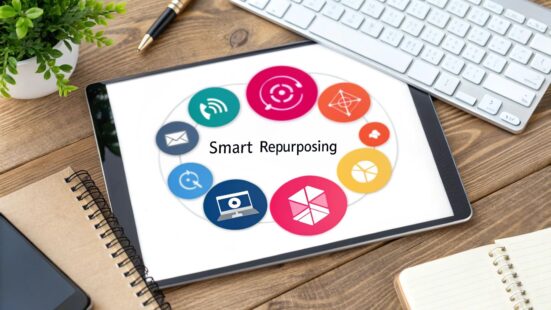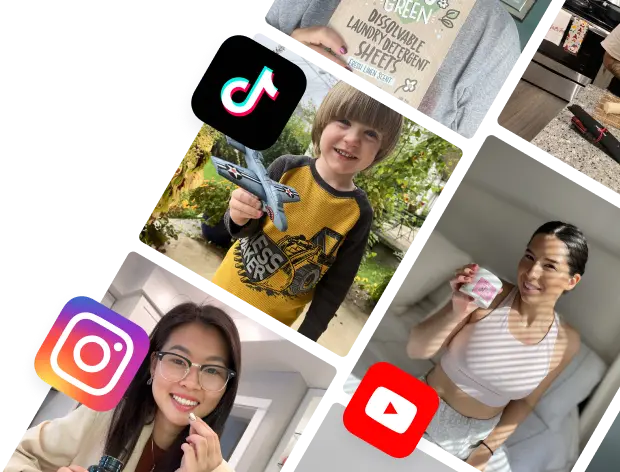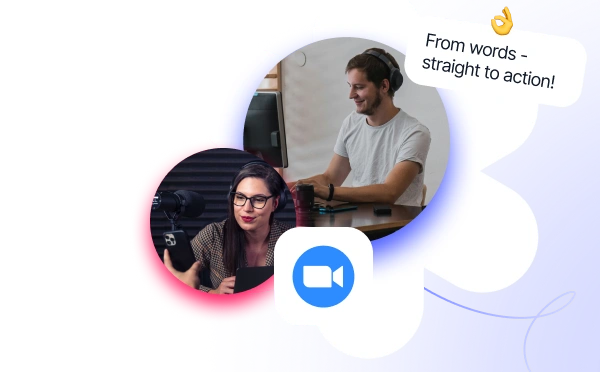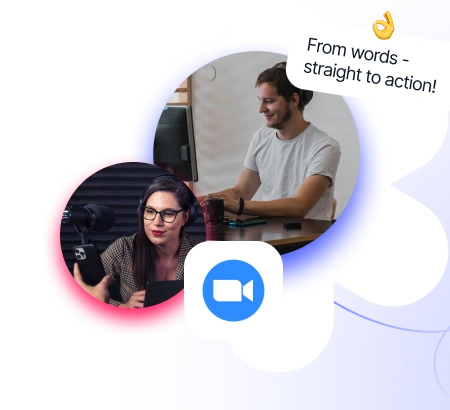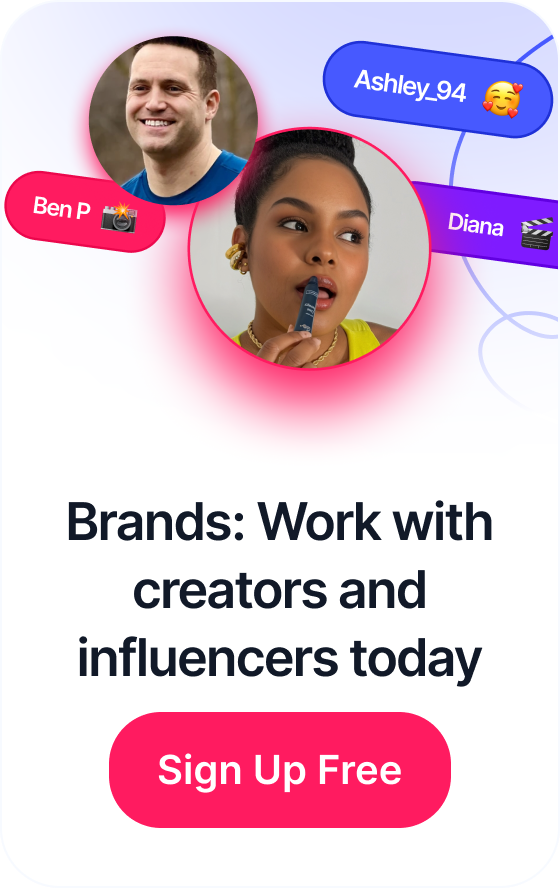 What is creator marketplace: A Brand Guide
What is creator marketplace: A Brand Guide
Creating high-quality content is a significant investment of time, resources, and creativity. But what happens after you hit 'publish'? Too often, valuable assets see a brief spike in engagement before being archived, their potential largely untapped. The key to maximizing your content's ROI and extending its lifespan lies not in creating more, but in strategically reusing what you already have. This is the core of effective content repurposing strategies: transforming a single core asset into a dynamic, multi-channel campaign.
This article moves beyond the basic advice of simply reposting links. We will provide a comprehensive breakdown of seven powerful methods to deconstruct, reformat, and redistribute your best work for maximum impact. You will learn how to turn one long-form video into dozens of text-based assets, adapt cornerstone articles into engaging micro-content for social media, and convert static data into interactive experiences. For those looking to dive even deeper into future-focused tactics, an expanded view on these concepts can be found in these 8 powerful content repurposing strategies for 2025.
By mastering these techniques, you can fill your content calendar, reinforce your brand messaging across different platforms, and reach new audience segments without starting from scratch. Each strategy outlined below includes actionable steps and practical examples to help you implement them immediately. Get ready to unlock the hidden value in your content library and build a more efficient, impactful, and sustainable marketing engine.
Table of Contents
1. Video-to-Text Repurposing
Video-to-Text Repurposing is a powerhouse strategy that transforms the rich, dynamic content of your videos into various text-based formats. This method unlocks the value stored in webinars, tutorials, interviews, and product demonstrations, turning them into blog posts, detailed articles, social media updates, and downloadable guides. By doing so, you cater to audiences who prefer reading over watching and significantly boost your SEO footprint.
This approach is one of the most effective content repurposing strategies because it allows you to capitalize on the time and resources invested in video production. Instead of a single video asset, you create a web of interconnected content that appeals to different platform algorithms and user preferences, extending the life and reach of your original message.

Why It Works and When to Use It
This strategy is particularly effective for e-commerce and DTC brands that already invest in video content. If you're creating product demos, unboxing videos, or customer testimonials, you have a goldmine of material ready for repurposing. Brands often start with a video-first approach because it's engaging and perfect for social platforms, but without a text component, they miss out on the immense value of search engine traffic.
Key Insight: Converting video to text makes your content indexable by search engines like Google, which cannot "watch" a video but can crawl and rank text. This directly translates to improved organic visibility and traffic.
Use this method when you want to:
- Maximize SEO Value: Turn a high-performing YouTube tutorial into a keyword-rich, step-by-step blog post.
- Reach New Audiences: Convert a 30-minute webinar into a series of short, digestible LinkedIn articles for a professional audience.
- Create Lead Magnets: Transform an in-depth product feature video into a comprehensive downloadable PDF guide.
Actionable Implementation Steps
Successfully converting video to text requires a structured process. Follow these steps to ensure efficiency and high-quality output:
- Transcribe Accurately: Start with a clean transcript. Use AI-powered tools like Otter.ai or human transcription services like Rev for speed and accuracy. This forms the raw material for all subsequent text assets.
- Structure and Edit: The raw transcript needs editing. Organize the content with clear headings, subheadings, and paragraphs. Refine the language to suit a written format, removing conversational filler words and ensuring grammatical correctness.
- Enhance and Optimize: Enrich the text with visuals. Add screenshots from the video, custom graphics, or relevant stock images. Integrate target keywords naturally throughout the content to optimize for search engines. Brands looking to create more compelling video source material can explore guides on how to create product videos to build a strong foundation.
- Atomize for Social Media: Extract key quotes, powerful statistics, or actionable tips from the main text. Turn these nuggets into standalone social media posts, quote graphics for Instagram, or threads for X (formerly Twitter). This micro-content drives traffic back to your primary text asset.
2. Long-Form to Micro-Content Strategy
The Long-Form to Micro-Content Strategy involves breaking down substantial, in-depth content like e-books, white papers, or comprehensive blog posts into smaller, bite-sized assets. This approach atomizes a single cornerstone piece into a multitude of micro-content formats perfect for platforms demanding brevity, such as social media feeds, email newsletters, and story-based formats. It allows you to maximize the return on your most significant content investments.
This technique is one of the most powerful content repurposing strategies because it systematically extends the reach and lifespan of your most valuable, authoritative content. Instead of letting a detailed report gather digital dust after its initial launch, you create a sustained campaign of smaller, engaging pieces that continuously drive traffic back to the original source and reinforce your brand's expertise across multiple channels.

Why It Works and When to Use It
This strategy is exceptionally effective for B2B and DTC brands that invest heavily in creating authoritative, data-driven content. If you've published an annual industry report, an exhaustive "ultimate guide" blog post, or a detailed case study, you possess a rich reservoir of information. Companies like HubSpot and Buffer pioneered this method by turning their extensive marketing reports and blog posts into daily social media updates, Twitter threads, and LinkedIn carousels, dramatically increasing engagement and lead generation.
Key Insight: Micro-content meets modern audiences where they are: on fast-paced social feeds. It captures attention quickly and serves as a low-commitment entry point, enticing users to explore the more comprehensive long-form asset.
Use this method when you want to:
- Boost Social Media Engagement: Turn a key statistic from a research paper into a compelling Instagram graphic or a short video clip for TikTok.
- Nurture Leads: Break down a downloadable e-book into a multi-part email series that delivers value over time.
- Increase Content Velocity: Generate a month's worth of social media posts from a single, well-researched blog article.
Actionable Implementation Steps
Effectively atomizing long-form content requires a strategic and organized approach. Follow these steps to maximize your output and impact:
- Identify Core "Nuggets": Scrutinize your long-form piece and extract the most valuable insights. Look for surprising statistics, compelling quotes, actionable tips, key definitions, or standalone concepts that can be easily understood out of context.
- Map to Platform-Specific Formats: Tailor each content nugget to the platform where it will be shared. A powerful quote becomes a visually appealing graphic for Instagram, a step-by-step process becomes a LinkedIn carousel, and a surprising statistic becomes the hook for a Twitter thread.
- Create with Visual Consistency: Use tools like Canva or Adobe Creative Suite to produce high-quality visual micro-content. Maintain consistent branding across all assets by using the same fonts, colors, and logo placements. This builds brand recognition as users see your content across different platforms. This approach is also excellent for incorporating user-generated content, which can be seen in these UGC content examples that showcase authenticity.
- Schedule and Link Back: Use a content calendar to plan the strategic release of your micro-content, preventing audience fatigue and ensuring a steady drumbeat of promotion. Crucially, every piece of micro-content must include a clear call-to-action and a link that directs the audience back to the original long-form asset.
3. Cross-Platform Format Adaptation
Cross-Platform Format Adaptation is a sophisticated strategy that involves tailoring your core content to fit the unique technical requirements, audience expectations, and consumption patterns of different social media and content platforms. Instead of simply cross-posting the same file everywhere, this method re-engineers the content’s format, pacing, and style to feel native to each specific environment, from TikTok to LinkedIn. This ensures your message resonates effectively, whether it’s viewed as a fast-paced vertical video, a professional text-based article, or an ephemeral Instagram Story.
This approach is one of the most vital content repurposing strategies for brands aiming to build a truly omnipresent and authentic online presence. It acknowledges that a one-size-fits-all approach fails to engage diverse audiences. By thoughtfully adapting content, you respect each platform's culture, maximize engagement, and ensure your core message is delivered with the greatest possible impact across your entire digital ecosystem.

Why It Works and When to Use It
This strategy is highly effective because user behavior changes drastically from one platform to another. A user scrolling through TikTok expects quick, high-energy, vertical videos, while someone on LinkedIn is more receptive to in-depth, text-based professional insights. Brands that master this adaptation, like MrBeast transforming long-form YouTube challenges into bite-sized, rapidly-edited TikTok clips, see significantly higher engagement and follower growth.
Key Insight: Content that feels native to a platform performs better because it doesn't interrupt the user's experience. Algorithms favor content that aligns with their platform's preferred format, leading to greater organic reach and visibility.
Use this method when you want to:
- Boost Engagement: Adapt a customer testimonial video into an elegant quote graphic for Instagram and a text-based success story for your blog.
- Maximize Reach: Turn a detailed YouTube product review into a series of short, engaging clips for Instagram Reels and YouTube Shorts.
- Establish Authority: Convert a popular Twitter thread breaking down an industry trend into a formal, polished article for LinkedIn.
Actionable Implementation Steps
Successfully adapting content across platforms requires a strategic and platform-aware workflow. Follow these steps to execute this strategy effectively:
- Analyze Platform Nuances: Before adapting, deeply understand each target platform. Study the top-performing content formats (e.g., vertical video, carousels, long-form text), popular audio trends, and optimal content lengths.
- Reformat the Core Asset: Modify the original content to fit the technical specifications. This includes changing aspect ratios (e.g., 16:9 for YouTube to 9:16 for Reels), re-editing video pacing for shorter attention spans, and adding native features like polls or stickers for Instagram Stories. To maximize your content's reach, adapting your videos for different platforms, such as understanding how to effectively post YouTube videos to Instagram, is a fundamental cross-platform strategy.
- Adjust the Tone and Copy: Rewrite captions, headlines, and calls-to-action to match the platform's voice. A playful, emoji-filled caption works for Instagram, whereas a more formal, data-driven tone is better for LinkedIn. This level of detail is a key part of an integrated marketing plan; you can learn more about how to create a content marketing strategy that incorporates these nuances.
- Test and Optimize: Use each platform's native analytics to monitor performance. Track metrics like watch time, engagement rate, and click-throughs to identify what resonates. Use these insights to continually refine your adaptation process for future content.
4. Series and Sequential Content Development
Series and Sequential Content Development is a strategic approach that transforms a large, comprehensive piece of content into a multi-part series released over time. Instead of a one-off content drop, this method creates a narrative arc, breaking down complex topics like an in-depth guide, a research report, or a long webinar into digestible, episodic installments. This builds anticipation, encourages repeat visits, and keeps your audience engaged over an extended period.
This is one of the most powerful content repurposing strategies because it maximizes the value of a single flagship asset. By serializing your content, you create multiple touchpoints with your audience, fostering loyalty and establishing authority. It turns a single interaction into a sustained conversation, perfect for nurturing leads and building a dedicated community around your brand.

Why It Works and When to Use It
This strategy is highly effective for e-commerce and DTC brands with deep subject matter expertise or extensive educational material. If you have a definitive guide to your product category, a complex tutorial series, or a detailed case study, breaking it into a series makes it far less intimidating and more accessible to a broader audience. It hooks the reader and incentivizes them to subscribe or follow you to get the next part.
Key Insight: Serializing content shifts the audience mindset from passive consumption to active anticipation. This "cliffhanger" effect, famously used in entertainment, is incredibly effective at boosting return traffic and increasing email newsletter sign-ups.
Use this method when you want to:
- Deepen Audience Engagement: Turn a massive research report into a four-part blog series, each installment exploring a different key finding.
- Build an Educational Hub: Repurpose a comprehensive product training webinar into a 10-part "masterclass" video series on YouTube, like Adobe's tutorials breaking down complex design features.
- Generate Consistent Leads: Convert an ebook into a multi-week email course, delivering one chapter at a time to nurture subscribers.
Actionable Implementation Steps
Creating a successful content series requires foresight and a commitment to consistency. Follow these steps for maximum impact:
- Deconstruct Your Pillar Content: Identify a large, valuable content asset (an ebook, webinar, or ultimate guide). Break it down logically into distinct, self-contained sections or chapters. Each section should offer real value on its own while teasing the next installment.
- Establish Series Branding: Create a consistent identity for your series. This includes a compelling title (e.g., Rand Fishkin's "Whiteboard Friday"), uniform visuals, and a recognizable format. This branding helps audiences immediately identify a piece of content as part of the series.
- Create a Distribution Cadence: Plan and schedule the release of each part. Whether it's daily, weekly, or bi-weekly, consistency is key to building audience expectations and habits. Promote the upcoming "episodes" to build hype.
- Interlink and Promote Cross-Series: Ensure every piece in the series links to the previous and next installments. Create a central landing page or a blog category that houses all parts, making it easy for new visitors to start from the beginning.
5. Interactive Content Transformation
Interactive Content Transformation is a dynamic strategy that breathes new life into static assets by converting them into engaging, participatory experiences. This method involves re-engineering content like blog posts, whitepapers, or reports into quizzes, polls, calculators, and interactive infographics. By requiring active user input, you transform passive consumption into an active dialogue, significantly boosting user engagement and time on page.
This approach is one of the most powerful content repurposing strategies because it adds a layer of personalization and immediate value for the user. Instead of simply reading information, the audience receives customized results, assessments, or data points, making the content more memorable and shareable. This process turns one-way communication into a two-way value exchange, capturing valuable user data in the process.
Why It Works and When to Use It
This strategy is highly effective for brands aiming to differentiate themselves in a saturated market and generate qualified leads. If you have data-rich whitepapers, comprehensive guides, or detailed case studies, you have the perfect source material for an interactive tool. Brands use this to move beyond simple content delivery and create a memorable brand experience that educates and entertains simultaneously.
Key Insight: Interactive content generates twice the conversions of passive content. By providing personalized value, such as an ROI calculation or a skills assessment, you create a powerful incentive for users to share their contact information, moving them further down the sales funnel.
Use this method when you want to:
- Boost User Engagement: Turn a lengthy article about marketing trends into an engaging "What's Your Marketing IQ?" quiz.
- Generate High-Quality Leads: Convert a complex industry report into a simple ROI calculator that provides a custom estimate in exchange for an email.
- Educate Your Audience: Transform a dense product guide into an interactive assessment that helps users discover which product version is right for them.
Actionable Implementation Steps
Successfully transforming static content into an interactive experience requires a focus on user value and seamless execution. Follow these steps for maximum impact:
- Identify the Right Content and Format: Review your existing assets. A data-heavy whitepaper is ideal for a calculator, while a "types of" listicle is perfect for a personality quiz. Choose the interactive format that best suits the original content's purpose.
- Choose the Right Tools: You don't need a development team to get started. Leverage user-friendly platforms like Outgrow, Typeform, or Interact to build quizzes, calculators, and assessments with professional templates and drag-and-drop interfaces.
- Design for Value and Simplicity: Ensure the interactive element provides genuine value. The questions should be clear, the interface intuitive, and the results insightful. The goal is to solve a problem or answer a question for the user quickly and effectively.
- Promote and Capture Data: Make the results easily shareable on social media to increase reach. Gate the results behind a simple form to capture lead information, but always be transparent about how you will use their data. Test the tool across all devices to ensure a smooth user experience.
6. Audio Content Expansion
Audio Content Expansion is a powerful strategy that involves transforming your existing written or visual content into engaging audio formats. This method taps into the massive and growing audience for podcasts, audio articles, and audiobooks, allowing you to reach consumers during their commutes, workouts, or while multitasking. By converting blog posts, articles, and even video scripts into audio, you cater to a preference for auditory learning and on-the-go consumption.
This approach is one of the most effective content repurposing strategies because it opens up an entirely new channel for content distribution. Instead of your audience needing to be in front of a screen, you can connect with them through their headphones, building a more intimate and direct relationship and extending the reach of your core message into new contexts.
Why It Works and When to Use It
This strategy is exceptionally effective for brands with a strong foundation of written content, such as detailed blog posts, research reports, or whitepapers. If you've already invested heavily in creating authoritative articles, converting them into audio allows you to multiply their value with relatively little effort. Media organizations like The New York Times and Harvard Business Review have successfully used this model to turn daily news and in-depth articles into popular podcasts and narrated pieces.
Key Insight: Audio content creates a unique, personal connection. The human voice can convey emotion and nuance that text cannot, helping to build brand trust and loyalty among listeners who feel like they are part of a conversation.
Use this method when you want to:
- Target Multitasking Audiences: Convert a long-form guide into a podcast episode for listeners to consume while driving or exercising.
- Increase Content Accessibility: Provide audio versions of your blog posts for users with visual impairments or those who simply prefer listening.
- Build a Loyal Community: Launch a branded podcast based on your core content themes to engage your audience on a regular, recurring basis.
Actionable Implementation Steps
Effectively expanding into audio requires a focus on quality and a thoughtful adaptation of your source material. Follow these steps for a successful transition:
- Select High-Performing Content: Identify your most popular blog posts, articles, or guides. These pieces have a proven track record of engagement and are the best candidates for your first audio assets.
- Adapt for a Conversational Tone: Don't just read a blog post verbatim. Rewrite the script to sound more natural and conversational. Break down complex sentences, add rhetorical questions, and speak directly to the listener.
- Invest in Quality Audio Production: Use a good-quality microphone and quiet recording space to ensure clear, professional sound. Use audio editing software to remove mistakes, add intro/outro music, and balance sound levels. Consistent audio branding makes your content instantly recognizable.
- Distribute Across Multiple Platforms: Don't limit yourself to one platform. Submit your podcast or audio content to all major directories, including Apple Podcasts, Spotify, and Google Podcasts, to maximize your potential reach and discoverability.
7. Visual Storytelling Adaptation
Visual Storytelling Adaptation is a creative strategy that translates text-heavy or audio content into compelling visual formats. This method transforms dense articles, data-rich reports, podcast segments, or customer testimonials into infographics, animated videos, comic strips, or social media carousels. It leverages the brain's preference for visual information, making complex ideas more accessible, memorable, and shareable.
This approach is one of the most impactful content repurposing strategies because it captures attention in a visually saturated digital landscape. Instead of relying solely on text, you create assets that communicate a message quickly and emotionally, catering to users scrolling through feeds on platforms like Instagram, Pinterest, and LinkedIn.
Why It Works and When to Use It
This strategy is exceptionally effective for brands dealing with complex data, technical subjects, or abstract concepts. If you have detailed case studies, research reports, or long-form blog posts, you possess ideal source material. Brands often produce insightful written content that gets lost in a sea of text; converting it into a visual narrative makes the core message stand out and resonates with a broader audience.
Key Insight: Visuals are processed 60,000 times faster than text. Adapting your content into a visual story bypasses the need for deep reading and delivers your key takeaway almost instantaneously, boosting engagement and information retention.
Use this method when you want to:
- Simplify Complex Data: Turn a quarterly business report into a series of clear, engaging infographics for stakeholders.
- Enhance Social Media Engagement: Convert a popular blog post into a humorous and shareable comic strip, like those popularized by The Oatmeal.
- Educate Your Audience: Transform a podcast episode or an expert interview into a short, animated explainer video for YouTube or TikTok.
Actionable Implementation Steps
Successfully adapting content for visual storytelling requires a blend of creativity and strategic thinking. Follow these steps to produce high-impact visual assets:
- Identify the Core Message: Review your source content (article, report, etc.) and distill it down to a single, powerful takeaway or story. What is the one thing you want your audience to remember?
- Choose the Right Visual Format: Match the message to the format. Data and statistics are perfect for infographics. A step-by-step process works well as a carousel or short video. A customer journey or relatable problem can be powerfully told through a comic strip.
- Design with Brand Consistency: Use tools like Canva, Piktochart, or the Adobe Creative Suite to create your visuals. Maintain brand consistency by adhering to your established color palette, fonts, and logo usage. This ensures your content is instantly recognizable.
- Optimize for Platform and Accessibility: Tailor the dimensions and style of your visual for its intended platform (e.g., vertical for Instagram Stories, horizontal for a blog). Always include alt-text for images to ensure accessibility and provide context for search engines.
7 Key Content Repurposing Strategies Comparison
| Strategy | Implementation Complexity 🔄 | Resource Requirements ⚡ | Expected Outcomes 📊 | Ideal Use Cases 💡 | Key Advantages ⭐ |
|---|---|---|---|---|---|
| Video-to-Text Repurposing | Moderate – requires transcription & editing | Moderate – transcription tools & editors | Improved SEO, multiple text assets, accessibility | Content needing SEO boost and multi-format reach | Boosts SEO, accessible, multiple content pieces from one source |
| Long-Form to Micro-Content | Moderate – content extraction & design | Moderate – design tools & content calendar | Extended content lifespan, increased social engagement | Breaking down reports, blogs for social platforms | Increases posting frequency, shareable bite-sized content |
| Cross-Platform Format Adaptation | High – deep platform knowledge & customization | High – editing, analytics, platform tools | Maximized cross-audience reach, higher engagement | Multi-platform campaigns requiring format adaptation | Leverages platform features, strengthens communities |
| Series & Sequential Content | Moderate – planning & consistent execution | Moderate – scripting, scheduling | Builds loyalty, sustained engagement, deeper topic coverage | Educational, storytelling, episodic content | Encourages regular visits, improves content consumption time |
| Interactive Content Transformation | High – technical development & design | High – specialized tools & developers | High engagement, personalized user experience, data collection | Quizzes, assessments, calculators, gamified content | Strong engagement, personalized value, viral potential |
| Audio Content Expansion | Moderate – audio production & editing | Moderate – audio equipment & software | Access to podcast audience, multitasking content consumption | Podcasts, audio articles, voice-overs | Taps growing audio market, intimate, accessible |
| Visual Storytelling Adaptation | High – design skills, visual production | High – design tools & professional skills | Greater shareability, simplifies complexity, appeals visually | Data-heavy content, educational stories, social sharing | Engages visual learners, highly shareable, simplifies info |
From Single Asset to Content Ecosystem: Putting Your Strategy into Action
We've explored seven distinct and powerful content repurposing strategies, moving beyond simple copy-and-paste tactics to a more sophisticated, ecosystem-based approach. From the foundational Video-to-Text Repurposing that turns dynamic visuals into searchable, evergreen articles, to the expansive Long-Form to Micro-Content Strategy that atomizes a single pillar piece into a cascade of social media assets, the core principle remains the same. The goal is to maximize the value, reach, and impact of every single creative effort you undertake.
By embracing Cross-Platform Format Adaptation, you meet your audience where they are, tailoring your core message to the unique consumption habits of each channel. Similarly, developing Series and Sequential Content transforms one-off posts into engaging, habit-forming narratives that keep your audience coming back for more. This journey proves that the content you’ve already created isn’t just a collection of past achievements; it’s a goldmine of future opportunities waiting to be excavated.
Key Takeaways for Building Your Content Flywheel
Mastering these content repurposing strategies is the difference between being a content creator and a content strategist. Instead of constantly chasing the next new idea on a content treadmill, you build a self-sustaining flywheel. Each new asset you create from an existing one adds momentum, reinforcing your authority and amplifying your message across the digital landscape.
The most critical takeaways from our deep dive include:
- Value Amplification: Your initial time and resource investment doesn't end at publication. Repurposing multiplies your ROI by extending the lifespan and reach of your best work.
- Audience Expansion: Different people prefer different formats. Transforming a blog post into an audio summary or an infographic allows you to connect with segments of your audience you might otherwise miss.
- Message Reinforcement: Seeing a core concept presented in multiple formats across various platforms strengthens brand recall and deepens your audience's understanding of your key value propositions. Consistency builds trust.
- Operational Efficiency: This is the ultimate "work smarter, not harder" approach. A strategic repurposing workflow frees up your team to focus on creating new, high-impact pillar content rather than scrambling to fill calendar slots.
Your Actionable Next Steps
Theory is valuable, but execution is what drives results. It's time to put these ideas into practice and begin building your own interconnected content web. Don't feel pressured to implement all seven strategies at once. Start with a focused, manageable approach.
- Conduct a Content Audit: Identify your top-performing piece of content from the last six months. This could be a blog post with high traffic, a video with great engagement, or a webinar with many attendees. This is your "pillar" asset.
- Select Two Strategies: Choose two repurposing methods from this article that best suit your pillar asset. For a high-performing blog post, this might be Audio Content Expansion (creating a podcast segment) and Long-Form to Micro-Content (creating a series of quote graphics and a Twitter thread).
- Execute and Distribute: Create the new assets. Don't just post them; develop a mini-launch plan. When you publish the new assets, be sure to link back to the original pillar content to drive traffic and create a cohesive user journey. To truly extend your content's reach and build a robust content ecosystem, consider developing a powerful content syndication strategy.
- Measure and Iterate: Track the performance of your new, repurposed assets. Did the audio version gain traction? Did the social media graphics drive engagement? Use these insights to refine your workflow for the next piece of content.
By transforming single assets into a thriving ecosystem, you create a powerful, omnipresent brand experience. The content repurposing strategies outlined here are your blueprint for achieving sustainable growth, building deeper audience connections, and establishing your brand as a definitive authority in your niche. The work you've already done is your greatest asset; now, go unlock its full potential.
Ready to scale your content creation and get authentic user-generated content for your repurposing efforts? JoinBrands connects you with a vast network of creators who can produce high-quality videos, images, and other assets featuring your products. Use this fresh, authentic content as the fuel for your entire repurposing engine by visiting JoinBrands today.
